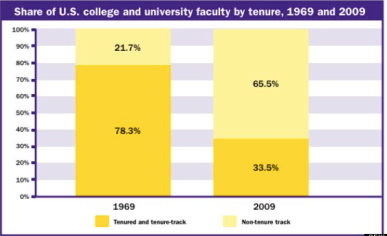“You are unique…”
At the core, I believe what students want is to understand their place in the world. They find themselves in turbulent, even traumatic, times. They are told from the time they can speak that they are unique, that they should dream of a livelihood to expresses their own uniqueness. And students embrace these dreams. They want to be firemen, nurses, teachers, astronauts, even president of the United States. Yet students also find themselves immersed in a world where they are powerless to control the things that ha ve the most effect over them. They can’t choose their family. They can’t choose their school. And they can’t choose the church they attend (or don’t). At every turn they face the limitations of their powerlessness.
ve the most effect over them. They can’t choose their family. They can’t choose their school. And they can’t choose the church they attend (or don’t). At every turn they face the limitations of their powerlessness.
Students try, of course, to face their powerlessness head-on. They choose their friends. They choose the activities they participate in, like sports, music, art, or student council. And in expressing themselves through these activities they can find some comfort, perhaps even profound meaning. Through these activities of self-expression students can begin to understand their place in the world and how they might one day live up to the mantle of uniqueness that has been laid at their feet.
“Here is a syllabus…”
 The problem is that many classrooms don’t allow the same opportunity for self-expression that students’ chosen activities offer. In many classrooms, students face a long list of agendas, assignments, procedures, and curricula which they have almost no power to change. On the first day of school the teacher tells them “you are special. You are unique. You can be anything you want to be.” The
The problem is that many classrooms don’t allow the same opportunity for self-expression that students’ chosen activities offer. In many classrooms, students face a long list of agendas, assignments, procedures, and curricula which they have almost no power to change. On the first day of school the teacher tells them “you are special. You are unique. You can be anything you want to be.” The
n a syllabus is distributed. The students notice that every week is accounted for, that every assignment has already been weighted, every due date assigned, and every consequence for not meeting those due dates spelled out in bold letters near the top of the syllabus.
A situation like this would never be accepted by those of us old enough to forget what school is like. Yet students soldier on with barely a word of complaint. To them, it’s not a shock that there is a disconnect between “you are unique” and “here is a syllabus – go complete it like a cog in a machine.”
“Student voice…”
Do students want technology integrated into their classes? I have no doubt that they do. But I think an important follow-up question is why do students want technology integrated into their classes? The answer to this question is all around. Students have posted it on Youtube, Facebook, Twitter, and Tumblr. Many students, like in this video, have said powerful statements. Important statements. From my observations, there is one common thread in all of these student statements. They want a voice to determine what and how they learn. They want to stop seeing the disconnect between “you are unique” and “here is a syllabus – go complete it like a cog in a machine.” In these students’ statements, technology and student voice have become connected.
It appears that many students (and adults) believe an increase in technology will create an increase in student voice. After all, many of the classrooms with the most student voice are also connected classrooms. So it would appear that there is a correlation between technology and student voice – increased technology causes increased student voice. But what if technology and student voice aren’t correlated like this? What if a classroom teacher’s desire to integrate student voice causes him/her to also integrate technology as a tool to increase student voice?
I would like to argue that this is in fact the correct correlation – that most of the early adopters of technology pursued a connected classroom because they believed it would bring more voice to their students. If this is true, what is important is not whether a school adopts a Chromebook, iPad, netbook, or laptop. If this correlation is true, what is important is whether a school puts student voice at the center of its culture and curriculum. I would argue that adding devices to a classroom lacking student voice will change very little. The worksheets will become Google docs, the scantron sheets will become Google forms, and the flashcards will become Quizlet links. But the students will still feel the same disconnect. They will be told they are a unique snowflake, but they will look at their world and feel like a cog in a machine.
So what do students want? They want to be unique, not just be told that they are unique. They want to express this uniqueness through meaningful activities both outside and inside the classroom. They want the freedom to choose how they should pursue these meaningful activities so they can, in turn, understand why they should pursue these meaningful activities. And once students understand the why they will be able to understand where they fit into this crazy, disconnected world.
I understand that this is a tall order. For some, it is perhaps an impossible order. Many classroom teachers will find themselves in institutions where there is a disconnect between their own uniqueness and the cog in a machine mentality. Many classroom teachers will not have the freedom to pursue student voice because a department/school/district/state-wide curriculum has been handed down from the powers that be. Many classroom teachers will be afraid to pursue student voice because it disrupts the way things have always been done. These concerns are all valid, and I can’t pretend to know the answer. Change is hard and opportunities for change are rare. However, the upside is that we are right now facing an opportunity for change. Technology does, in fact, offer an opportunity to disrupt the system and implement change. But change must be implemented for the right purpose, as a way to increase student voice, help students understand their place in the world, and help students achieve what they truly want.
Are we implementing technology change for the right purpose? Are we giving students voice in the changes we are making? Will those changes help students better understand their place in the world? These are the questions we should be asking.
– @BushJMS














